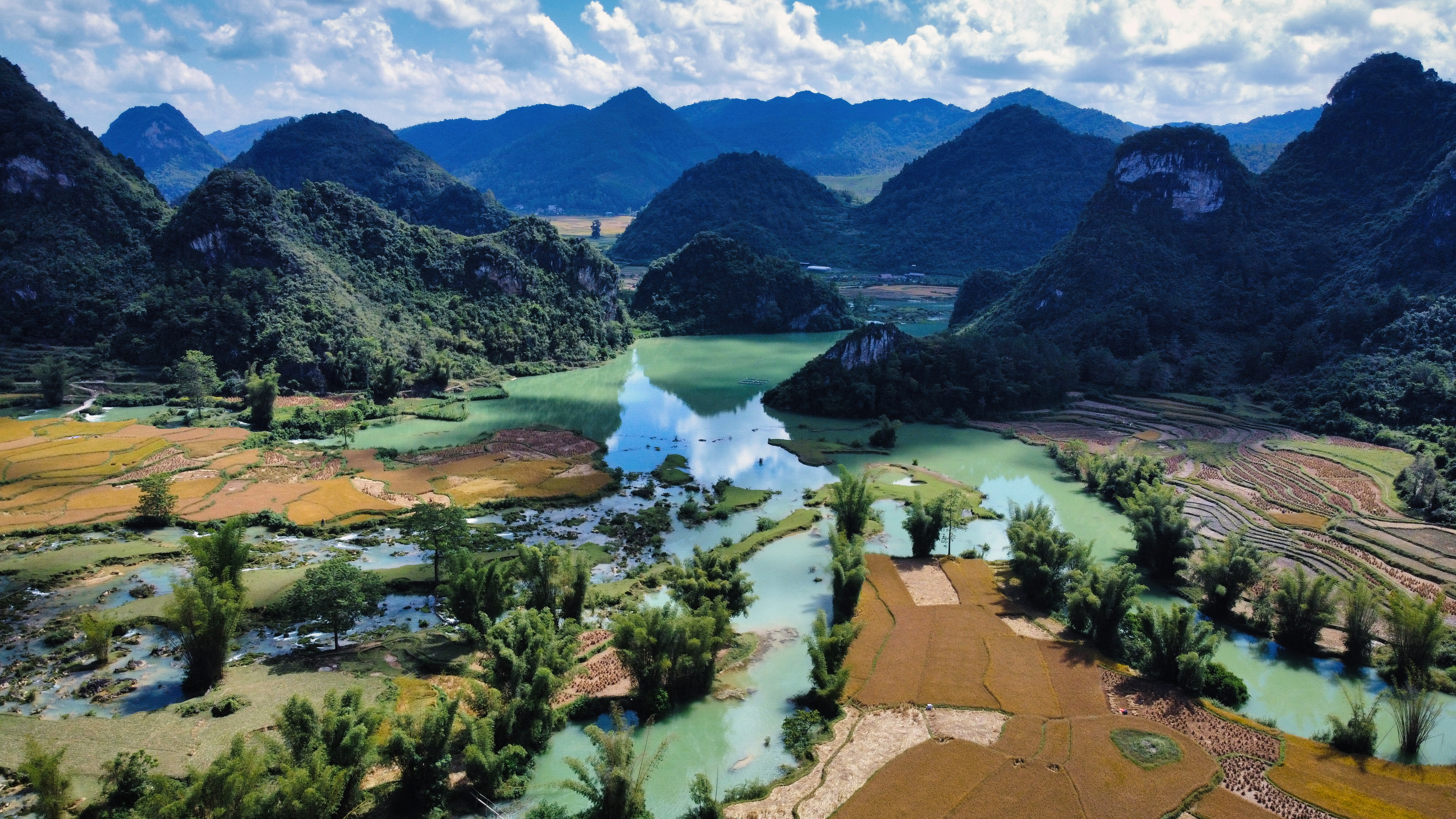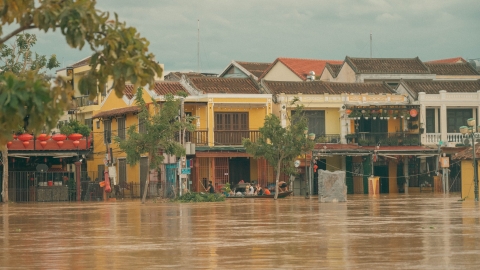Tristan Huynh is a Frenchman currently living and working in Hanoi. He is passionate about traveling and has been to many places around the world. Tristan has a special love for the scenery of Southeast Asia, especially Vietnam. He shared that as long as he has enough free time, Tristan is ready to pack his camera and hit the road to experience new places.
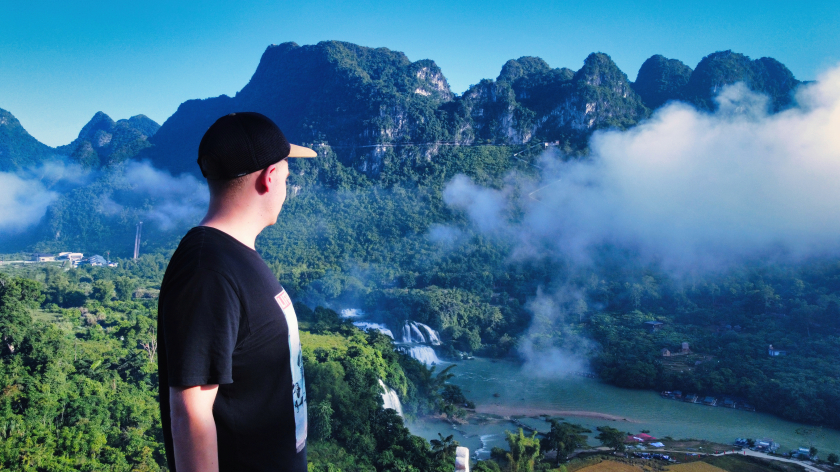
Tristan Huynh chose Ban Gioc waterfall as his destination.
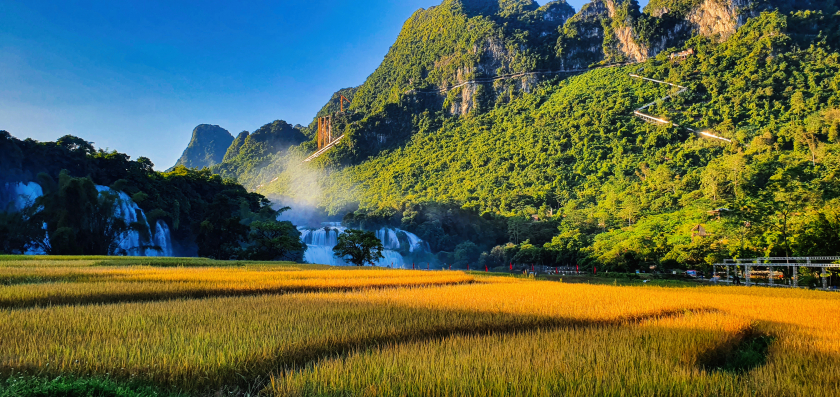
Ripe rice fields next to Ban Gioc waterfall.
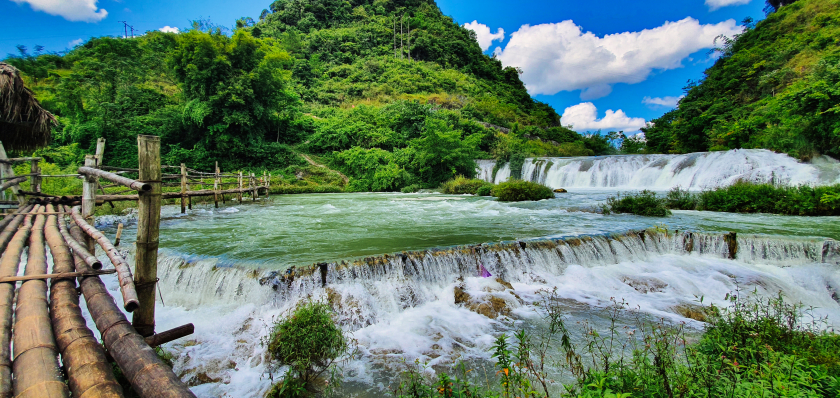
Ban Gioc Waterfall is located on the Vietnam-China border.
Responding to Travellive, Tristan Huynh chose early October to travel to Ban Gioc waterfall. This is the time when the water in this area is clear blue and the rice fields are golden, creating a poetic scene. In addition, Tristan Huynh chose to go to Ban Gioc waterfall because although this place is famous, few tourists visit. He can comfortably take photos without worrying about the crowdedness.
"Standing in the middle of nature and blending in with it made me feel free and relaxed. However, I also felt tired because of the urge to explore this area as much as possible. Besides, spending hours taking pictures over and over again until I got the right photo wore down my energy," Tristan Huynh said about his feelings when he came to Ban Gioc and captured many majestic natural scenes.
At Ban Gioc waterfall, his favorite place is the pagoda above the waterfall. This is Truc Lam Ban Gioc Phat Tich Pagoda, built in 2013. The items of Truc Lam Ban Gioc Phat Tich Pagoda such as the temple gate, Bodhisattva statue tower, the three treasures, the ancestor house... are built in the traditional Vietnamese Buddhist architectural style.

The temple next to Ban Gioc waterfall.
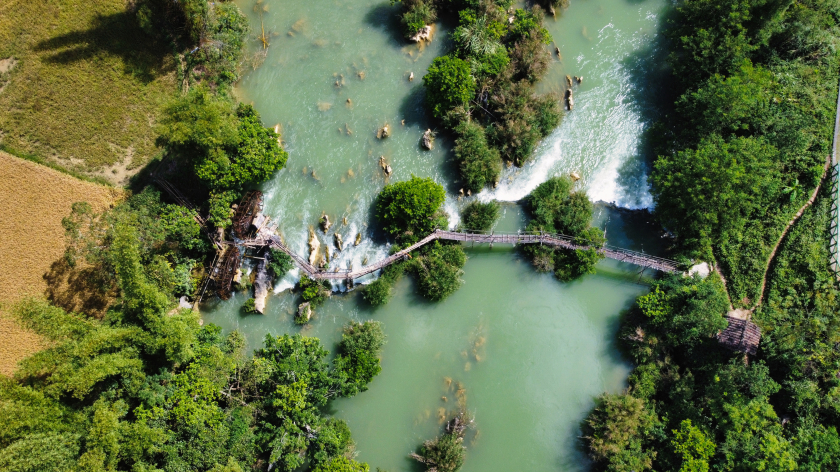
Photo of Ban Gioc waterfall from above.
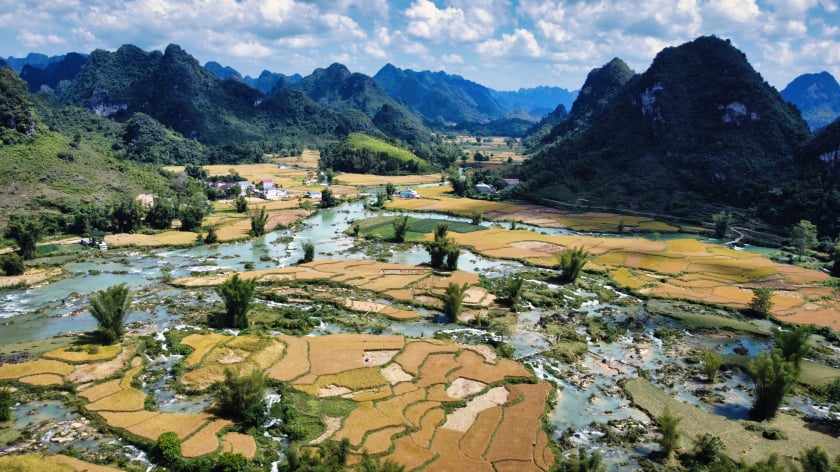
Panoramic view of Trung Khanh valley, Cao Bang.
There is also a temple to worship the hero Nung Tri Cao - a character, a cultural symbol of the 11th century in Cao Bang, a man with military and diplomatic talent, who made great contributions to protecting the northern border of the Fatherland Vietnam. Truc Lam Ban Gioc Buddhist Temple at sunset with the back of the temple leaning against the mountain, the temple facing a large area below, including Ban Gioc waterfall.
"When taking photos here, I feel a special excitement. Because I'm not just taking a photo of the landscape, but also the time, weather, and composition. In particular, these photos are where I express my emotions in a moment," Tristan Huynh said.
When talking about the difficulties in taking the photo series, Tristan Huynh said that the weather was the most important factor. The light in this area is always erratic, Tristan had to sit and watch for several hours before taking the right photo. However, the French tourist still felt unsatisfied with his product. On the other hand, Ban Gioc is located close to the Chinese border, so using a flycam is taboo. Tristan was forced to find higher terrain to be able to capture a panoramic view.
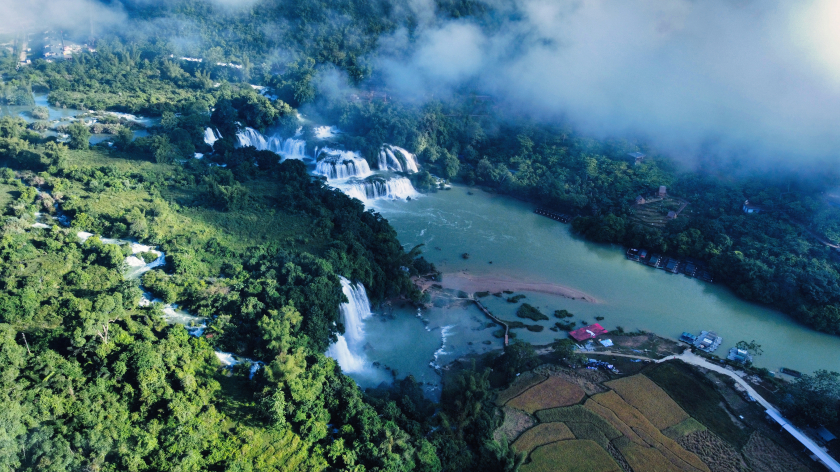
Ban Gioc Waterfall is the Vietnam-China border landmark.
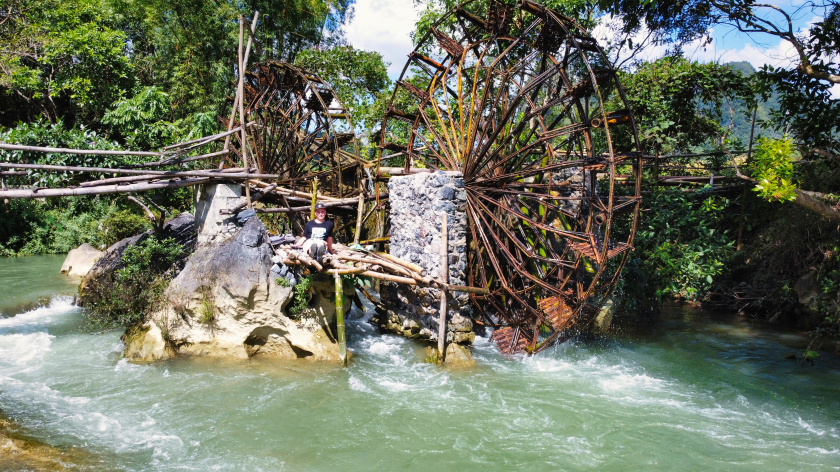
Water wheel in Quay Son.
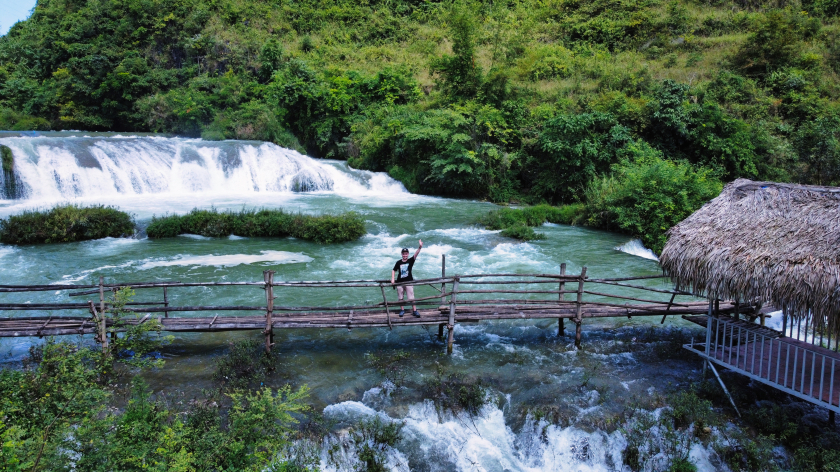
The bridge across Ban Gioc waterfall.
"Not far away, tourists can go to Quay Son, which has a beautiful water wheel and a panoramic view of the valley. Co La Waterfall, although smaller, is also a unique tourist destination," Tristan Huynh shared. In the near future, he plans to travel to Pu Luong and Bac Quang, then to Mui Ne.
Ban Gioc Waterfall is one of the famous waterfalls not only in our country but also known to international friends. Located in the top 4 largest transnational waterfalls in the world, this place increasingly attracts many tourists to Cao Bang to admire. The waterfall consists of 2 parts: Cao waterfall is a secondary waterfall because of the small amount of water, Thap waterfall is the main waterfall located on the Vietnam-China border landmark. According to the 1999 treaty, the secondary waterfall belongs entirely to Vietnam, the main waterfall is divided in two.





